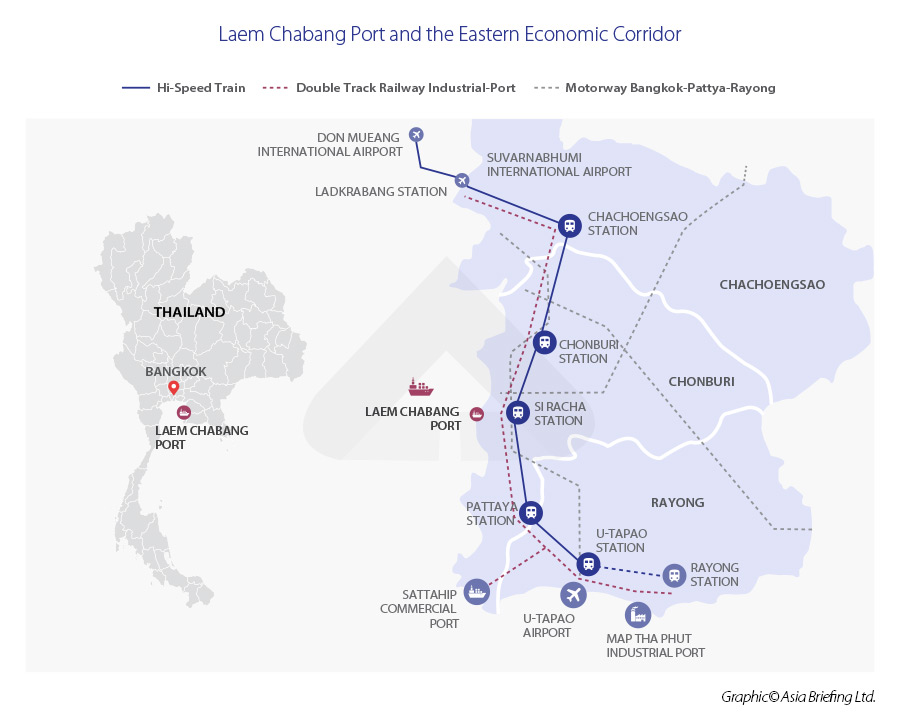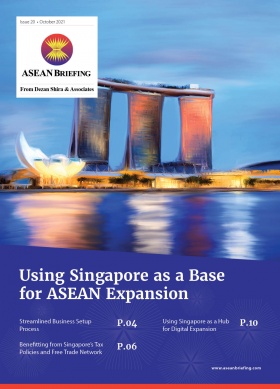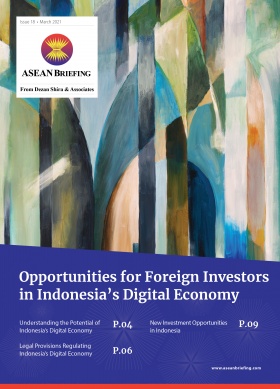Thailand’s Laem Chabang Deep Seaport to Begin Phase 3 Expansion
Thailand’s Laem Chabang deep seaport is to begin its Phase 3, 30-billion-baht (US$927 million) expansion that will see the port have a container throughput capacity of 18 million twenty-foot equivalents (TEU) per year once completed in 2029.
Construction on the F1 and F2 berths of the port is slated for 2023 and 2027, respectively, with the port set for commercial operations in 2025 and 2029.
The project, which involves the cooperation of the Port of Thailand Authority (PAT) and the GPC International Terminals consortium, aims to develop the Laem Chabang Port towards the world’s top 10 ports, complete with full automation management systems. The F1 and F2 container berths are expected to generate 8 billion baht (US$245 million) per year, collectively.The Laem Chabang Port is the world’s third-largest gateway port and is strategically located in an area surrounded by Thailand’s primary industrial and economic hub — the Eastern Economic Corridor (EEC).
How Thailand is transforming the Laem Chabang seaport into a regional hub
The Laem Chabang Port was identified as an alternative to the crowded Bangkok port as early as the 1960s.
Since the first B1 and B2 begin operations in the 1990s, the port has transformed into Thailand’s first deepwater port and one of the busiest in the region, serving as the primary terminal for the export of Thai manufactured goods and imports for consumables and other industrial inputs. According to the World Shipping Council, the Laem Chabang Port was the 20th busiest in the world in 2020 – ahead of other ASEAN ports in Indonesia, the Philippines, and Vietnam.
Strategic location
The expansion of the Laem Chabang Port will push Thailand’s growth plans for the EEC and boost existing manufacturing industries from electronics to automotive — Thailand’s automotive industry is a vital contributor to its economy, accounting for 10 percent of GDP.
The EEC is a special economic zone spanning the three provinces of Rayong, Chonburi, and Chachoengsao, with the mission of promoting the development of Thailand’s eastern seaboard into a hub for high-tech industries and innovation, and a regional gateway for trade and investments.
Development of the EEC should benefit 12 targeted industries:
- Medical services;
- Advanced agriculture and biotechnology;
- Food;
- Biofuels and biochemicals;
- Automation and robotics;
- High-value medical tourism;
- Education and human resource development;
- Defense;
- Aviation and logistics;
- Digital technology;
- Next-generation automotive; and
- Smart electronics.
Over the next five years, the EEC could lure annual average investments of 500 billion baht (US$15 billion). This could raise Thailand’s GDP by as much as five percent annually and help move the country out of the middle-income trap.
Cargo handling
The port’s current 13 terminals can cater to the largest classification of container vessels, known as the Post Panamax, in addition to roll-on/roll-off capabilities, necessary for servicing Thailand’s expanding automobile industry. Under Phase 3, the Laem Chabang Port aims to increase car export accommodation from 2 million units to 3 million units per year.
Highly integrated supporting infrastructure
An important aspect of the Phase 3 initiative is the development of an integrated rail hub that would improve cost-effectiveness and reduce congestion on the roads in the Laem Chabang area.
Currently, approximately 88 percent of transport from the port is via the road system and 9.5 percent by rail. The freight rail hub within Phase 3, called the single rail transfer operator (SRTO), aims to increase the handling capacity of the rail transport from 500,000 TEUs per year to 2 million TEUs per year. This will increase the proportion of container traffic moved by rail to 30 percent.
The Thailand port authority plans to build the SRTO rail hub on some 960,000 square meters of land, featuring six rail sidings with each accommodating two trains simultaneously.
In addition to an integrated rail hub, PAT will upgrade the coastal shipping terminal located in terminal A of the Laem Chabang Port. The terminal will support the growth in coastal shipping in Thailand, particularly along the route between the Laem Chabang Port and the Bangkok Port.
The upgraded terminal will have the capacity to accommodate a 3,000-deadweight tonnage (DWT) vessel, which can transport over 150 TEUs. In total, the terminal is expected to have a container throughput capacity of over 300,000 TEUs per year.
Other connectivity advantages
The Laem Chabang Port offers other connectivity advantages due to its strong logistics network, thus offering easy access to regional and domestic destinations that are all within reach of the modern Silk Road.
Cargo can be transported by the current rail system from the port to the ICD Latkrabang Rail terminal on the outskirts of Bangkok, some 130km away. From there, barges and feeders can carry the cargo to Bangkok port or other river ports along the Chao Phraya River. Further, the Suvarnabhumi International Airport is located in the eastern suburbs of the city and has the capacity to ship over 3 million tons of cargo annually.
Cargo can also be transferred to the Ranong Port by coastal vessels to the Ranon Port, which has a direct connection to the BIMSTEC countries (Bangladesh, Bhutan, India, Nepal, Sri Lanka, and Myanmar), as well as the Middle East, and Africa.
Further Reading
- High-Tech in Thailand: Incentives for R&D, Semiconductors, and Smart Packaging
- Thailand Issues New Incentives to Attract Foreign Investors, Professionals, and Retirees
- Indonesia Passes Bill to Build New Capital City: Deadline 2024
About Us
ASEAN Briefing is produced by Dezan Shira & Associates. The firm assists foreign investors throughout Asia and maintains offices throughout ASEAN, including in Singapore, Hanoi, Ho Chi Minh City, and Da Nang in Vietnam, Munich, and Esen in Germany, Boston, and Salt Lake City in the United States, Milan, Conegliano, and Udine in Italy, in addition to Jakarta, and Batam in Indonesia. We also have partner firms in Malaysia, Bangladesh, the Philippines, and Thailand as well as our practices in China and India. Please contact us at asia@dezshira.com or visit our website at www.dezshira.com.








